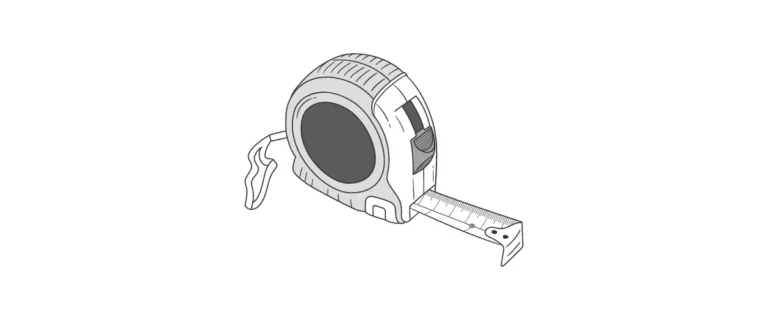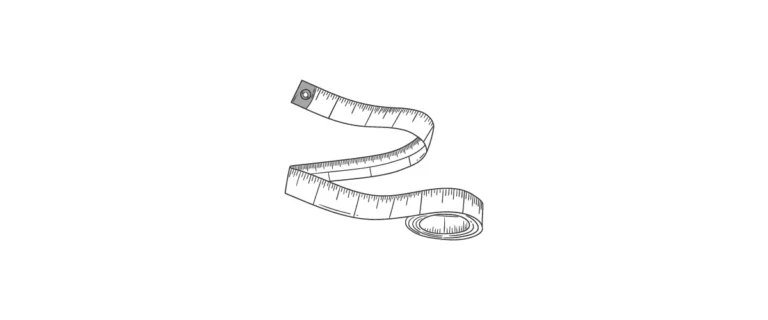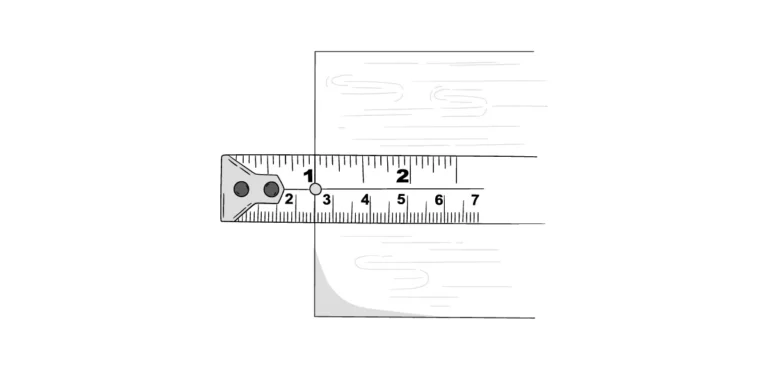Planning to tackle a DIY project? Or maybe you’re trying to make sure some new furniture will fit in your living room? A tape measure is an essential tool for accurately measuring distances, and for determining the exact size of spaces and objects. But how can you make sure you’re reading it right? Knowing how to properly read a tape measure ensures that you will always get the right measurements. Incorrectly reading one can lead to all kinds of problems, whether you’re remodeling your home or purchasing new appliances or furniture. The following cheat sheet on how to read a tape measure can help you get the correct measurements.
Types of Tape Measures
What kind do you plan on using? A few different types of tape measures and measuring units are available, including:
- Standard tape measure
- Fabric or cloth tape measure
- Extended-length tape measure
A standard tape measure is ideal for various projects around the house, such as DIY remodeling, woodworking, or repairs. The retractable measuring tape is usually made of metal, giving it a rigid feel.

Fabric or cloth tape measures are typically used to get body measurements for clothing or dimensions for textile projects. Also known as sewing tape, these are soft and highly flexible. Cloth tapes are also useful for measuring round and oval objects because-unlike standard metal tapes-they easily conform to curved shapes. And they often have standard inch measurements on one side of the tape, and metric on the opposite side.

Extended-length tapes, measuring 100 feet or longer, are often used on large-scale landscaping and construction projects. These types of tapes are made of metal or fiberglass and typically do not have an interior spring that automatically retracts the tape back into its housing, but instead are equipped with a hand crank for reeling in the tape.

Types of Measuring Units
When you use a tape measure, you’ll notice it’s marked with measuring units. Some tape measures have imperial or standard units, such as inches and feet. Others have metric units, like centimeters and millimeters.
You can also find tape measures that have both measuring units. These often have inches along the top edge of the tape, and centimeters along the bottom.

Tape Measure Parts
Being familiar with the different components of these tools can be helpful when using them. Tape measures generally have these six parts:
- Belt clip: A metal clip for securing the tape measure to your pants, belt or tool pouch
- Case: The plastic or metal housing for the tape
- End hook: The L-shaped metal piece that’s riveted to the very end of the tape; it hooks onto the edge or end of a surface, so you can extend the tape out as far as necessary
- Hook slot: A narrow slot in the end hook that allows you to slip the tape onto a nail head
- Tape: The long, retractable yellow or white metal part that’s coiled up inside the case; a strong, steel spring inside the case automatically retracts the tape after each use
- Thumb lock: A button that you can press down to lock the tape at any length, preventing it from being retracted back into the case
Steps for Reading a Tape Measure
How do you accurately read this kind of tool? Let’s go over the steps involved in reading tape measures, whether you’re using imperial or metric units.
How to Read a Tape Measure in Inches
Tape measures with imperial units are marked in inches, fractions of inches, and feet. Inches are typically divided into 16 parts, each known as one sixteenth of an inch. For example, you might get measurements of 1/16 of an inch or 5/16 of an inch. This allows you to get very precise measurements compared to only using larger fractions, such as a 1/4 inch or 1/2 inch. Also note that an even number of 1/16 inch measurements is always read as 1/8th of an inch. For example, two 1/16ths of an inch is read as 1/8 inch, and six 1/16s equals 3/8 inch.
To read a tape measure in inches — or fractions of an inch — do the following:
- Look for the nearest whole inch first, such as the 2-inch mark or 5-inch mark
- Inch markings are the biggest numbers and longest lines on the tape measure, which extend across the entire width of the tape
- Look at the lines between inch markings to see how exact of a measurement is available, such 1/6th inch, 1/8 inch or 1/2 inch
- More lines between inch markings mean you can get more precise measurements; many tapes also include 1/32-inch graduations
- For 1/2-inch, look for the second-longest line between inch markings
- The 1/4 inch graduation lines are slightly shorter than the 1/2-inch lines, and the 1/8-inch markings are slightly shorter than the 1/4-inch lines
- To read 1/16th of an inch, look for lines between the 1/8-inch lines

Some tape measures label all markings, providing a quick and convenient way to read measurements.
Reading a Tape Measure in Centimeters
Using a tape measure with metric units? These have markings for centimeters and millimeters. Keep in mind that one centimeter equals 10 millimeters. So, these tape measures have ten lines between centimeter markings.

To read a tape measure in centimeters or millimeters, follow these steps:
- Look for the nearest centimeter marking, which is the longest line and biggest number on the tape measure
- In between each centimeter marking are 10 closely spaced lines, which represent millimeters
- Millimeter lines are shorter than centimeter markings, with the slightly longer line halfway between each centimeter number is the half-centimeter marking
- For a decimal measurement with metric units, count the millimeter lines and place this number after the centimeter number, such as 8.4 when you have an 8-centimeter marking followed by four millimeter lines

How to Use a Tape Measure for Exact Measurements
Knowing how to read a tape measure won’t do much good if you’re not using this tool correctly. To make sure you get accurate measurements, do the following:
- Slip the tape measure’s end hook onto the edge or end of the object you’re measuring
- Then extend the tape across to the opposite edge or end of the object
- Keep the tape measure held straight while extending it to ensure an exact measurement. If it bends or twists at all, you will get an imprecise measurement.
- An optional way to get a very precise measurement is to use a technique known as “burning an inch.” (Note that often requires two people.) Instead of hooking the tape onto the workpiece, hold the 1-in. line exactly on the edge of the workpiece. Then, extend the tape and read the dimension at the opposite edge. Now, and this is important, subtract one inch from the measurement to get the exact distance.
Being able to easily read a tape measure comes in handy in many instances. With this skill, you can get accurate measurements for all of your projects or other tasks around the house, yard and workshop.










